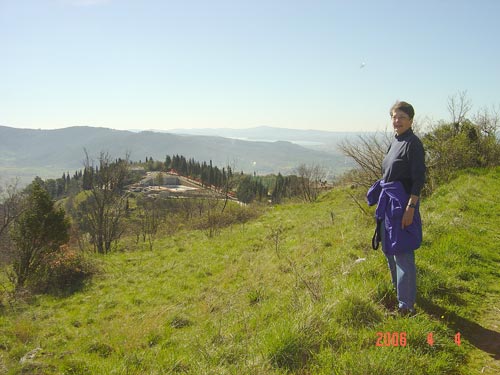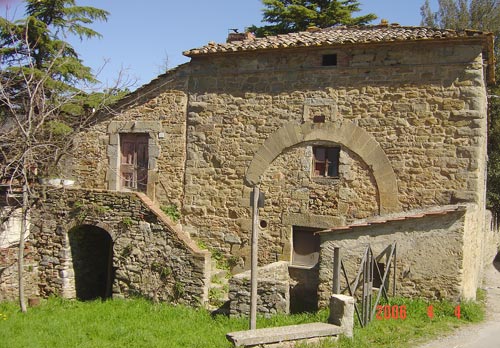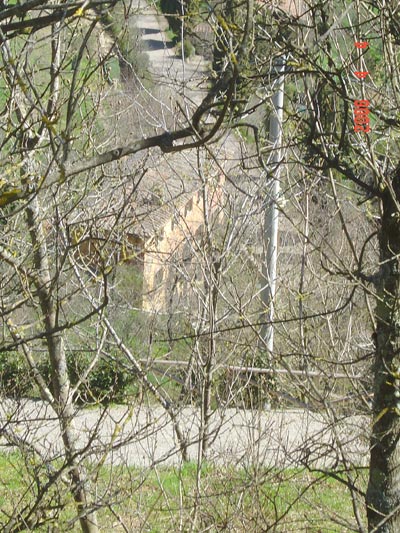Send this e-mail letter to a friend:
Dear Friends:
I’m thrilled that my friend Arlene Yaconelli has been able to come to Cortona for a visit while I’m here. We go walking every morning, and everywhere we go there is a history lesson to be found.
On one of our most recent outings, we hiked up a hill to the Etruscan wall that surrounds Cortona. The Etruscans were an ancient civilization that flourished in the Tuscan area from the 9th to the 1st century B.C. From the hill, we could see Lake Trasimeno, where the Carthaginian general Hannibal defeated the Romans in 217 B.C.
Pat has been walking the Tuscan hills with Arlene Yaconelli in the mornings. The ribbon of water in the distance is Lake Trasimeno, made famous by Hannibal's victory over the Romans.Cortona is 2,000 years old, and it’s amazing to me that something as ancient as the wall still exists. In the United States, the oldest structures are on the East Coast. As a matter of fact, Jamestown, Virginia, the oldest English-speaking settlement in “the New World,” will celebrate its 400th anniversary next year. As you travel farther west, the oldest buildings get younger and younger. To someone in California, a one hundred-year-old structure is old, but to a Virginian it doesn’t seem old at all. By comparison, Europeans don’t consider Virginia’s antiquities to be old.
This old foundry may be familiar to members of the P. Buckley Moss Society who participated in the 2004 Society Tour of Italy.For centuries Cortona remained one of Italy’s best kept secrets until a few years ago, when author Frances Mayes’ book Under the Tuscan Sun became a best seller and was the basis for a movie. Now, Cortona is a very popular tourist destination.
The house of Frances Mayes, author of Under the Tuscan Sun, as seen from the Etruscan Wall.Until next week…
Ciao!
Pat
The Moss
Portfolio
74 Poplar Grove Lane
Mathews, VA 23109
(800) 430-1320
©P. Buckley Moss 2005


